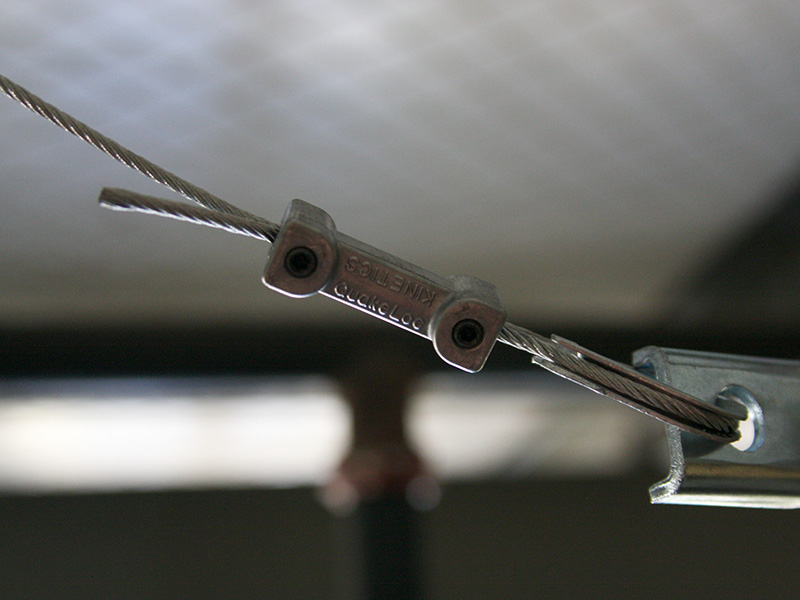Seismic Bracing
Missouri, Southern Illinois, and Arkansas all line the New Madrid Seismic Zone. While we don’t experience earthquakes at the same rate that our friends in California and Nevada do, we do have a responsibility to prepare our cities and structures for seismic events.
Gaus Scott Company has specialized in the design and supply of seismic bracing for plumbing, HVAC, mechanical systems, and machinery, and is proud to represent industry leader Kinetics Noise Control’s Seismic Bracing lines.
We are regional leaders in the highly specialized seismic field, and our 60+ years of experience has given us a comprehensive understanding of the various building codes and municipalities in the region that can determine seismic requirements. For all of your Seismic questions, give us a call!

What is Seismic Bracing?
Kinetics Noise Control is the industry leader in Seismic Bracing, and Gaus Scott Company is proud to be their regional representative for the past 30+ years.
Seismic Bracing consists of all of the necessary components that keep plumbing, HVAC, and mechanical systems fully functional and in-tact during and following an earthquake or seismic event.
Earthquakes chaotically shake structures in multiple directions, with force stemming from the ground and growing in magnitude on the higher levels of a building. Most of the mechanical equipment in a building is designed to be rigid and stationary, which is not ideal for seismic events.
Think of the copper or galvanized steel used for plumbing pipes, or the massive electrical generators you might see at a hospital. They are critical to the functionality of the building, but they also aren’t design to move or adjust AT ALL. Seismic bracing secures these systems to the rest of the structure while also creating room for these systems to shift without breaking.
Generally that means mounting heavy machinery on restrained spring isolators or isolated roof curbs, and hanging pipes and ducts with seismic restraint cable kits, among other measures. The placement and grades of seismic equipment is a highly engineered science dictated by code but unique to every building’s specifications.

Why is Seismic Bracing Important?
Seismic is often required in high-importance facilities like hospitals, schools, data centers, and government buildings where keeping the building operational is key to the immediate health, safety and security of the people inside and the larger communities.
Effective Seismic Engineering and Seismic Bracing can be a huge difference maker in the event of an earthquake. It’s the cheapest form of earthquake insurance on the market. Even better, you pay for it once and never worry about again.
In the case of an earthquake, if seismic bracing is non-existent in a building you can expect to lose electric power, running water, heat and air conditioning. And not just for a short period of time. The damage done, more often than not, is permanent.
In hospitals, that means temperature sensitive meds can expire and go bad, ventilators and life support machines stop running.

In Data Centers, that means physical and cyber security measures go down leaving financial information and other classified data exposed to attack. For multi-tenant residences, it means costly repairs or total replacement of essential functions. The list goes on.
For these reasons, many municipalities along known seismic zones require seismic bracing as a matter of legal building code. They require full inspections to ensure proper preventative measures are in place.
However not all at-risk areas enforce this, leaving the decision up to the building owner and the engineering and design teams. Gaus Scott ALWAYS recommends including seismic bracing in the construction of your buildings so that you can have peace of mind in any circumstance.
If you’d like to learn more about seismic bracing, or are looking for expert guidance in the seismic design of your facility, give us a call!
